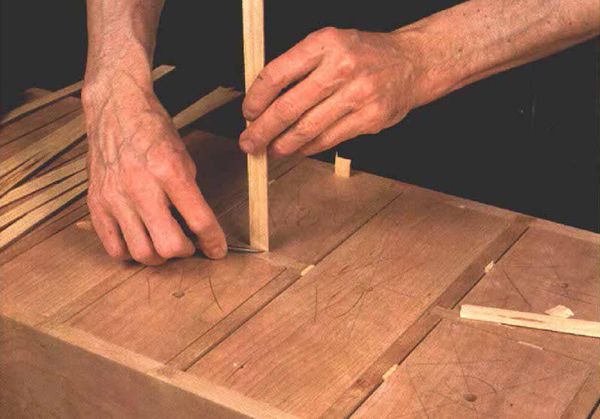Drawer Fronts That Fit Flush
Beltsanding and drawer stops leave a front that's always aligned
Synopsis: Maintaining drawer-front alignment to the face frame can be a seasonal problem on furniture built with slab construction and typical rear-mounted drawer stops. Christian H. Becksvoort shares a technique of front-mounted drawer stops from an antique piece; he says there is no other technique that will leave the case and drawers as flat and as perfectly aligned. He explains here how to fit the stops and sand the case and drawers. Finishing details are included.
Maintaining drawer-front alignment to the face frame can be a seasonal problem on furniture built with slab (or wide board) construction and typical rear-mounted drawer stops. The depth of the case can vary considerably from summer to winter depending upon the width, species and cut of the wood (see FWW #94, pp. 38-41). The length of wood does not change noticeably with changes in moisture content, however, so flush-mounted drawers with stops at the back tend to protrude in the winter and are recessed in the summer.
I’ve borrowed a technique of front-mounted drawer stops from an antique piece and have used it quite successfully for the last several years. Front-stopped drawers always maintain the same position in relation to the front of the cabinet, and they don’t need to be individually adjusted for each drawer. This technique uses a stop glued to the divider under the drawer instead of placing the stop at the back of the drawer.
The stops also help me sand the drawer fronts and cabinet front at the same time, ensuring a flat, smooth plane and perfect drawer alignment. I install the drawers in the carcase against the stops and wedge them in place. I then beltsand the entire front of the case, including drawer fronts, drawer dividers and the front edges of the cabinet sides, as shown in the bottom photo on p. 84, The drawers support the belt sander, so I don’t have to worry about balancing it on the thin dividers and gouging the case sides when I sand to the edge of the case. While sanding the drawer fronts, I’m also able to sand out all the minor misalignment that occurs when sliding the dovetailed dividers into place in the case sides. First I fit the drawers, leaving about -in. to -in. gap on either side, and a gap above the drawer appropriate to the size, species and moisture content of the drawer front. I also make the drawers short enough (about -in. shy of the full cabinet depth) to accommodate more than the full range of movement expected in the cabinet side.
From Fine Woodworking #104
Fine Woodworking Recommended Products

Dubuque Clamp Works Bar Clamps - 4 pack

Estwing Dead-Blow Mallet

Bessey EKH Trigger Clamps























Log in or create an account to post a comment.
Sign up Log in